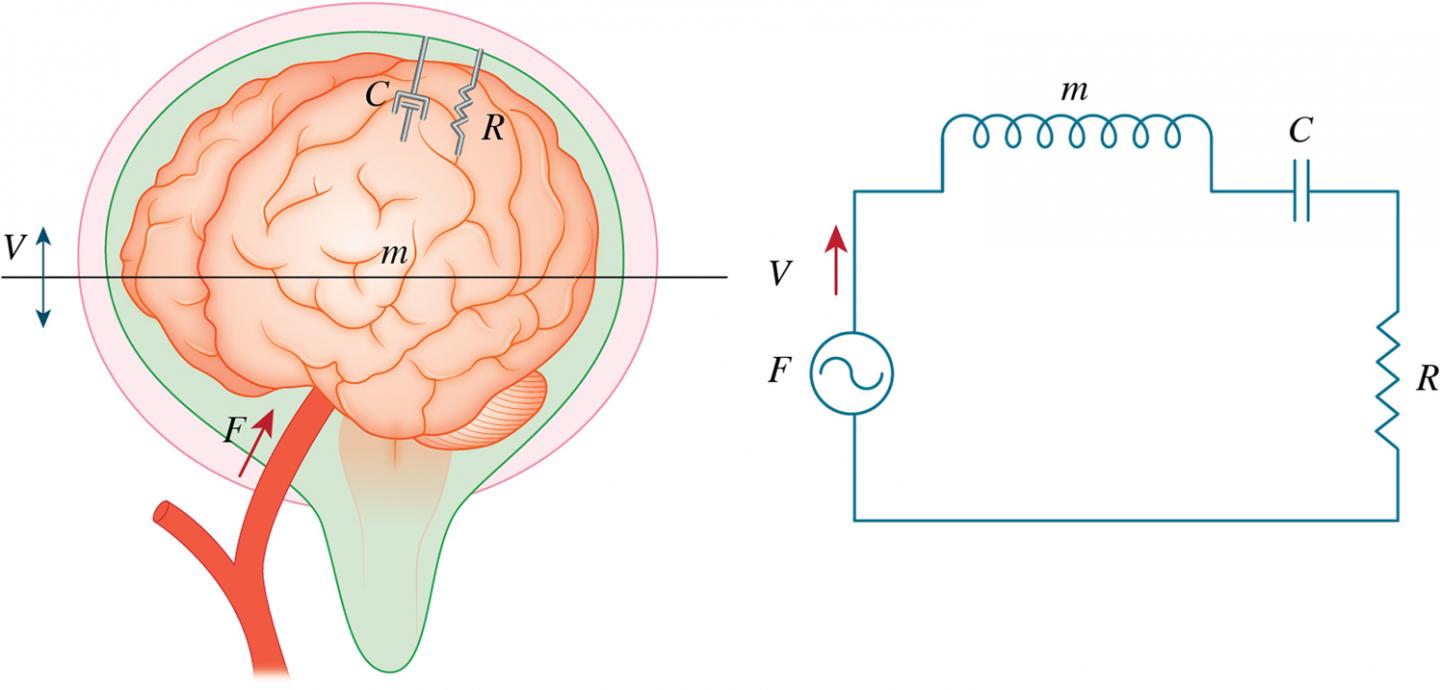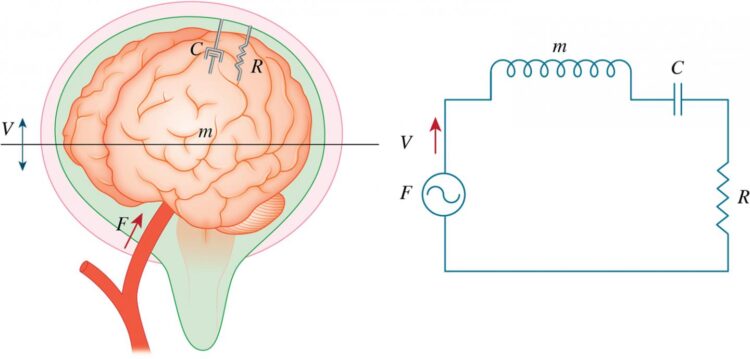
Credit: Copyright 2020, Springer Nature Limited
The only way to accurately measure pressure inside the skull is to insert a catheter or sensor inside. However, this is invasive and techniques with less risk are desired. Intracranial pressure (ICP) needs to be correctly accounted for in a variety of medical situations including neurosurgery, neurology and emergency medicine.
Doctors at Shinshu University School of Medicine discovered a non-invasive way to predict ICP by the brain’s natural resonance frequency (NRF). This is because the NRF of the brain was found to be only dependent on the ICP value. The NRF is what frequencies an object will vibrate at when a force is applied.
The NRF of the brain can be measured from the movement of the eardrum and external ear pressure waveform. The NRF of an object is based on its mass, elasticity and other factors. The NRF of the brain is dependent on brain weight, which on average is 1.4kg and the cerebral volumetric compliance, or how much give the skull has.
There are many factors that modulate the ICP value, such as the respiratory rhythm, which changes as much as 55% with inhalation and exhalation. The pressure inside the chest effects the pressure inside the vessels taking blood up to the brain which then effects the ICP.
There was a strong correlation (R =0.99999) between the ICP value and NRF of the brain, which means that ICP can be predicted from the NRF.
More data needs to be collected for high ICP values and small brain weights.
All experiments were conducted in accordance with relevant guidelines, regulations and informed consent.
###
For more information: https:/
Acknowledgements
Special thanks to Mr. Norio Koike and Mr. Satoshi Yasumoto for manufacturing original measurement and recording apparatus in Ichikawa Electric Corporation Ltd. Tokyo, Japan. This research was funded by Japan Science and Technology Agency (JST). A-STEP feasibility study in 2012, and by Japan’s New Energy and Industrial Technology Development Organization (NEDO) in 2013, and by Grants-in-Aid for scientific research in Ministry of Education, Culture, Sports, Science and Technology-Japan from 2015 to 2017 and 2018 to 2020. Receiver: Kenji Furihata.
Author contributions
K.H. and T.G. conceived the project, managed patients and investigated clinical data. K.F. and T.G. designed the study. K.F. designed measurement apparatus, constructed the mathematical model and analysed the data. T.G. and K.F. wrote the paper and K.H. supervised the paper. The manuscript reflects the contributions of all authors.
Media Contact
Hitomi Thompson
[email protected]
Related Journal Article
http://dx.





